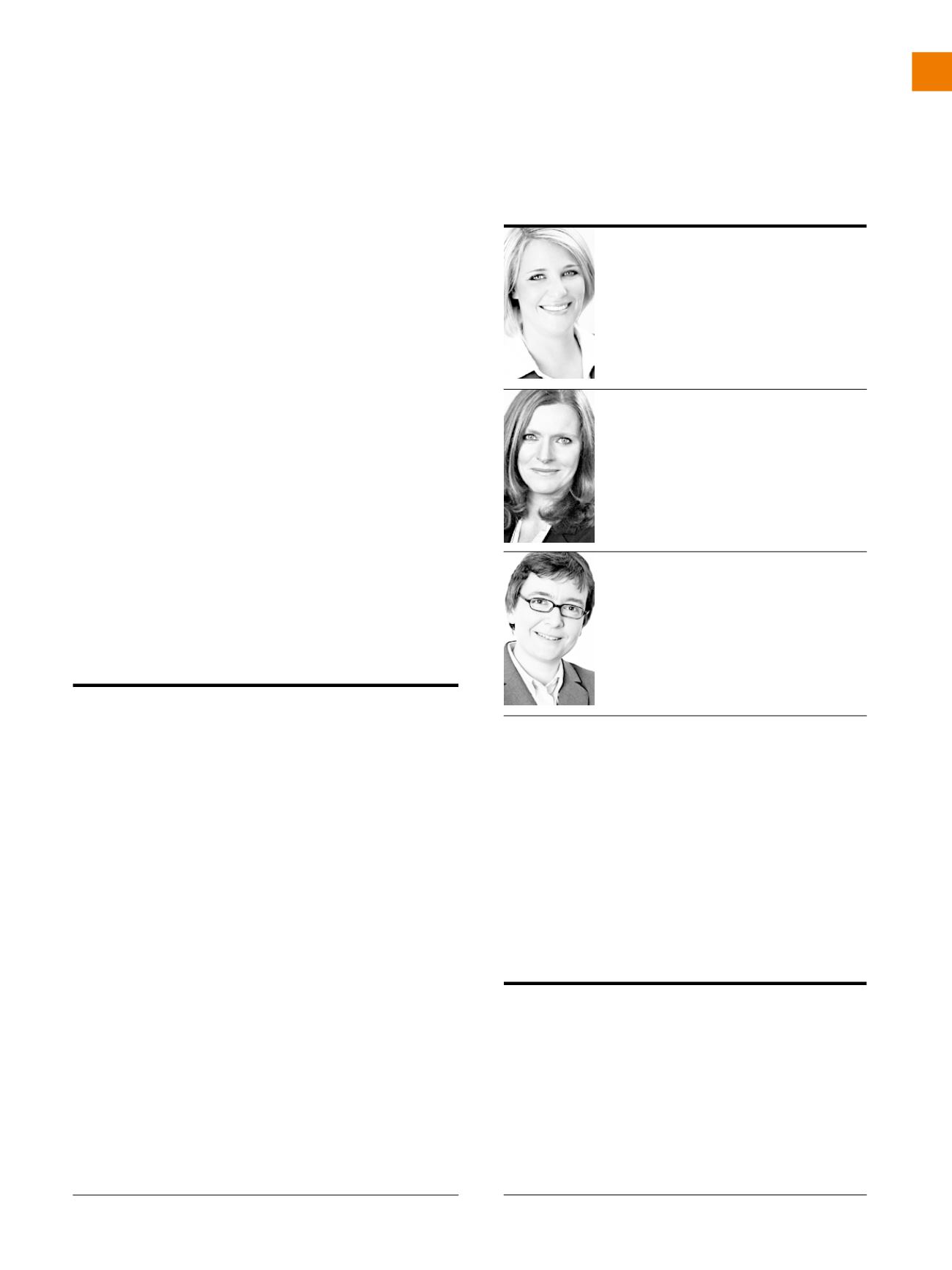
33
01/16 PERSONALquarterly
SUMMARY
Research question:
How HRM can create an organizational
innovation community that satisfies different participating indivi-
duals?
Methodology:
(1) Literature analysis to identify relevant psy-
chographic categories, (2) quantitative cluster analysis to identify
similar groups of participants, (3) qualitative interview study to
describe profiles of identified groups of participants.
Practical implications:
Tailored organizational communities offer
a valuable path to develop additional innovations by utilizing the
innovative potential of satisfied employees.
DR. ANKE WENDELKEN
Friedrich-Alexander-Universität Erlangen-
Nürnberg, Lehrstuhl für Wirtschaftsinforma-
tik, insb. Innovation & Wertschöpfung
E-Mail:
LITERATURVERZEICHNIS
Bansemir, B., Neyer, A.-K. & Möslein, K. M. (2012): Anchoring Corporate Inno-
vation Communities in Organizations. International Journal of Knowledge-Based
Organizations, 2(1), 1–20.
Bardi, A. & Schwartz, S. H. (2003): Values and Behavior: Strength and Structure of
Relations. Personality & Social Psychology Bulletin, 29(10), 1207–1220.
Bostrom, R. P. & Heinen, J. S. (1977): MIS Problems and Failures: A Socio- Techni-
cal Perspective. Part I: The Causes. MIS Quarterly, 1(3), 17–32.
Dornaus, C., Staples, R., Wendelken, A. & Wolf, D. (2015): Innovationspotenziale
– Entdecken! Wertschätzen! Nutzen! Erlangen: FAU University Press.
Felin, T. & Zenger, T. R. (2014): Closed or Open Innovation? Problem Solving and
the Governance Choice. Research Policy, 43(5), 914–925.
Fleming, L. & Waguespack, D. M. (2007): Brokerage, Boundary Spanning, and
Leadership in Open Innovation Communities. Organization Science, 18(2), 165–180.
Gebauer, J., Füller, J. & Pezzei, R. (2013): The Dark and the Bright Side of Co-
Creation: Triggers of Member Behavior in Online Innovation Communities. Journal of
Business Research, 66(9), 1516–1527.
Miles, M. B. & Huberman, A. M. (1994): Qualitative Data Analysis (2nd ed.).
Thousand Oaks: Sage Publications.
Neyer, A.-K., Bullinger, A. C. & Möslein, K. M. (2009): Integrating Inside and
Outside Innovators: A Sociotechnical Systems Perspective. R&D Management, 39(4),
410–419.
Schwartz, S. H. (1992): Universals in the Structure and Content of Values: Theore-
tical Advances and Empirical Tests in 20 Countries. In M. P. Zanna (Ed.), Advances in
Experimental Social Psychology (pp. 1–65). Academic Press.
Trist, E. L. & Bamforth, K. W. (1951): Some Social and Psychological Consequences
of the Longxwall Method of Coal-Getting: An Examination of the Psychological
Situation and Defences of a Work Group in Relation to the Social Structure and Tech-
nological Content of the Work System. Human Relations, 4(1), 3–38.
Wendelken, A. (2015): Archetype Participants of Organizational Innovation Com-
munities. Verlag Dr. Kovac.
West, J., Salter, A., Vanhaverbeke, W. & Chesbrough, H. (2014): Open Innovati-
on: The Next Decade. Research Policy, 43(5), 805–811.
DR. SABINE BRUNNER
HHL Leipzig Graduate School of Management
(HHL), Center for Leading Innovation and
Cooperation
E-Mail:
PROF. DR. KATHRIN M. MÖSLEIN
Friedrich-Alexander-Universität Erlangen-Nürn-
berg, Lehrstuhl für Wirtschaftsinformatik, insb.
Innovation & Wertschöpfung und HHL Leipzig
Graduate School of Management (HHL), Center
for Leading Innovation and Cooperation
E-Mail:
Filter für die Maßnahmenwahl, so ist der „Fit“ zu den domi-
nanten Mitarbeitergruppen überdies unmittelbar gegeben.
Wenn Unternehmen, und insbesondere das Human Resour-
ce Management, in Zukunft vom klassischen „One size fits
all“-Community-Ansatz absehen und stattdessen einen maßge-
schneiderten („tailored“) Community-Ansatz mit einem pro-
fessionellen Community Management (wie hier beschrieben)
verfolgen, bietet dies einen auch ökonomisch tragfähigen Pfad,
um zusätzliche Innovationen durch intrinsische Motivation so-
wie das (bislang ungenutzte) Innovationspotenzial der teilneh-
menden Mitarbeiter zu befördern.


